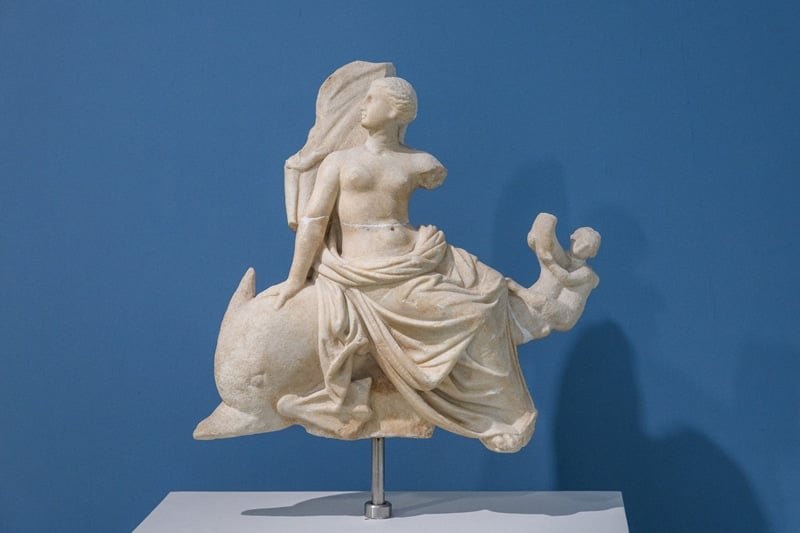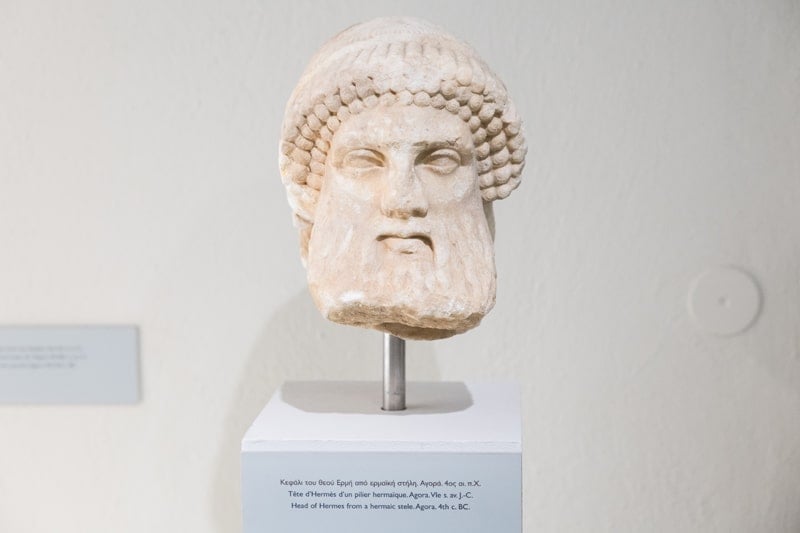
Nestled in the heart of the ancient city of Thassos, the island’s archaeological museum stands as a beacon of history, a neoclassical building with a simple yet sturdy elegance. Founded in 1935, this is the oldest museum in the Eastern Macedonia and Thrace region, yet its recently renovated spaces offer a modern and immersive experience.
Following a complete overhaul and expansion between 1989 and 2000, the museum now spans 1,500 square meters and houses over 2,300 artifacts. As Stavroula Dadaki, the head of the Ephorate of Antiquities of Kavala, explained in a recent report of the Athens Macedonia News Agency (AMNA), the new permanent exhibition, which opened in 2010, was designed to create a “modular” and interactive experience, directly connecting visitors to the nearby archaeological site.
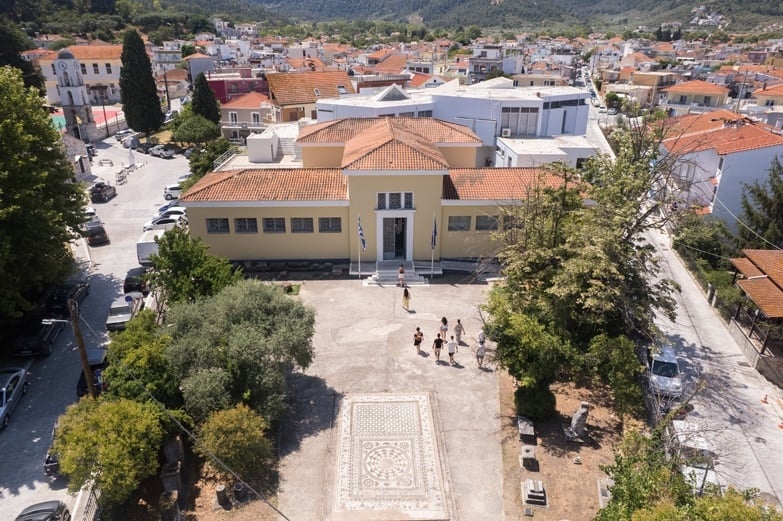
A courtyard of marble and mosaics
The journey into Thassos’s past begins before one even steps inside. The museum’s courtyard, with its commanding view of the sea, is an open-air exhibition of the island’s most famous resource: its renowned white marble.
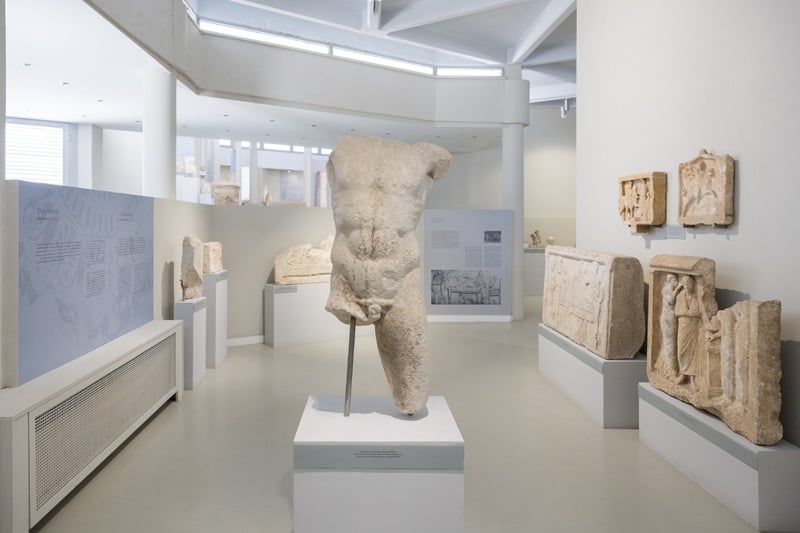
Here, visitors encounter monumental objects—sarcophagi, altars, presses, and unfinished sculptures—that testify to the island’s thriving ancient marble industry. At the courtyard’s center, a vibrant mosaic floor from a Roman villa adds a splash of color, hinting at the luxury of ancient life.
Related: Ancient Theater of Thassos, Greece Restored With Shiny White Marble
The colossal kouros of Thassos: A silent greeting
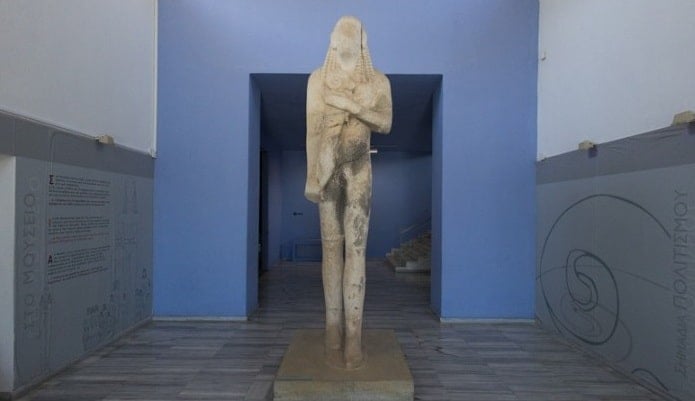
Upon entering the museum, visitors are immediately greeted by one of Greece’s most impressive sculptures: the colossal Kouros of Thassos. Standing at nearly 3.5 meters tall, this statue of a youth holding a ram is a masterpiece of 6th-century BC archaic sculpture. The Kouros’s imposing scale and serene expressiveness create a sense of awe.
Dadaki revealed the statue’s dramatic history, noting its discovery in 1911 by the French School of Archaeology. It was found in five pieces, having been repurposed as building material in a Byzantine wall. Now reassembled, it stands as the star of a room that also features other significant works, including an archaic relief of a goddess that was repatriated after a theft.
From humble pottery to imperial grandeur
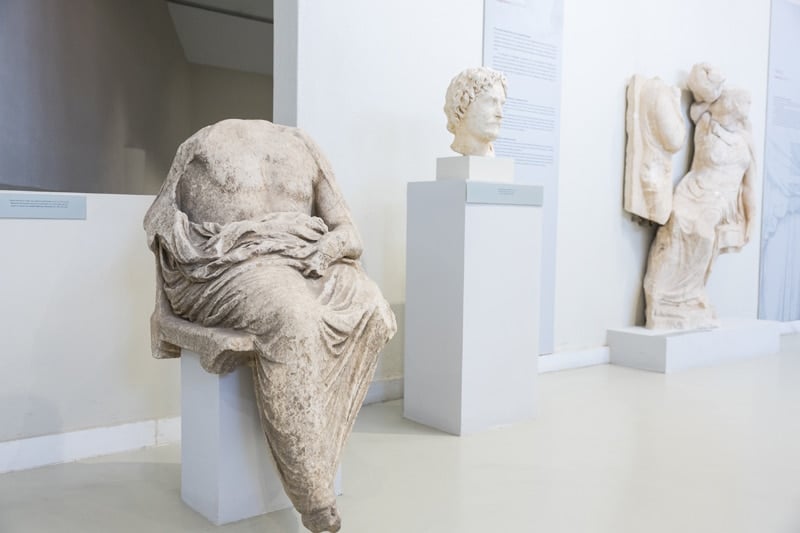
The museum’s narrative unfolds chronologically, guiding visitors through the island’s major historical periods. Humble ceramics from the prehistoric era tell stories of daily life, while faithful reproductions of a Late Bronze Age house and an Iron Age tomb offer a tangible connection to Thassos’s earliest inhabitants.
The exhibition progresses to the classical, Hellenistic, and Roman periods, showcasing the island’s growing wealth and political connections. Imposing statues of Roman emperors, including a particularly notable one of Emperor Hadrian—a benefactor to the city—stand alongside busts of Julius Caesar and Claudius. These pieces underscore Thassos’s importance within the wider Roman Empire.
A legacy of wine and marble at Thassos Museum

Thematic sections delve into the island’s economic and religious life. Exhibits reveal the Thassians’ worship of deities like Apollo, Athena, and Artemis, and highlight the island’s lucrative wine trade. Dadaki pointed out that Thasian wine was famed throughout the ancient world, and its production was closely regulated by the state, a fact evidenced by inscriptions and the distinctive seals found on wine amphorae.
A room dedicated to marble sculpture celebrates Thassos’s artistic heritage. Key exhibits here include the elegant statue of Aphrodite with a Dolphin, which has been featured in international exhibitions, and a head of Alexander the Great.
The museum visit concludes on a high note in the attic, where a unique vantage point allows visitors to admire the back of the great Kouros statue, offering a final, reflective moment. With 20,000 visitors last year and 6,000 in the first half of this year alone, the Archaeological Museum of Thassos is proving to be not just a repository of history, but a vibrant and essential destination.
